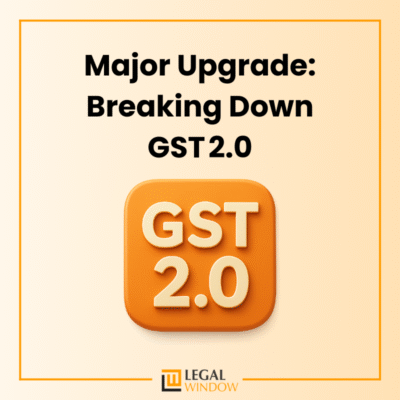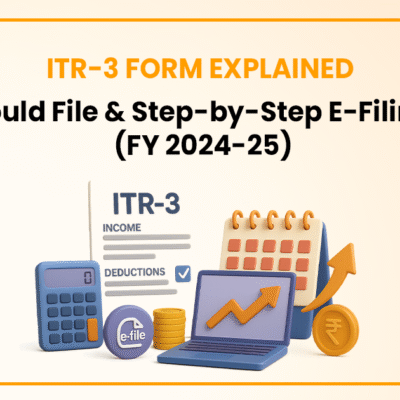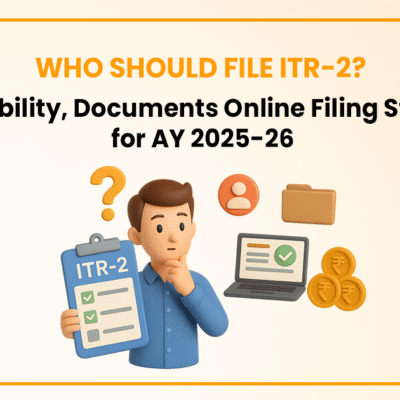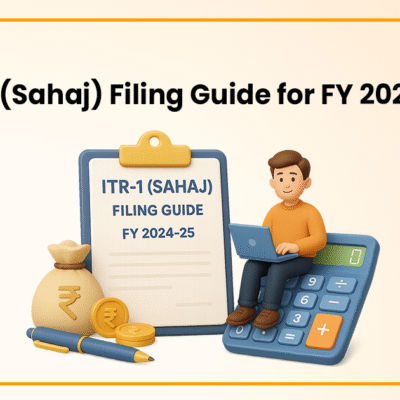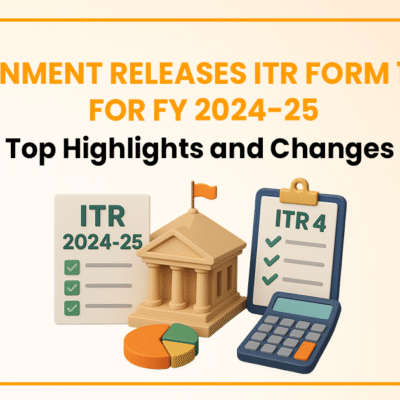 Banks and Banking Institutions are critical to a country's development. Banks are economic actors, and they, like other sectors, are subject to hazardous operations. A bank auditor examines the banking sector's services during a Banking Audit. A Bank Auditor is defined as an accounting professional who evaluates the procedure. Audits of credit unions or banks might be either external or internal. One of the most important aspects of a bank audit is Revenue Leakage. Some banks undertake it individually, while others include it as part of a Concurrent Audit, Statutory Audit, or Internal Audit before beginning the audit. In this article, we will discuss Revenue Leakage in Banks Audit.
Banks and Banking Institutions are critical to a country's development. Banks are economic actors, and they, like other sectors, are subject to hazardous operations. A bank auditor examines the banking sector's services during a Banking Audit. A Bank Auditor is defined as an accounting professional who evaluates the procedure. Audits of credit unions or banks might be either external or internal. One of the most important aspects of a bank audit is Revenue Leakage. Some banks undertake it individually, while others include it as part of a Concurrent Audit, Statutory Audit, or Internal Audit before beginning the audit. In this article, we will discuss Revenue Leakage in Banks Audit.
But before we move on to discuss the Revenue Leakage in Bank Audits, let us first discuss the Audit of a Bank so that we can easily understand this concept.
| Table of Content |
Audit of Bank
An Audit of Banking is a process that inspects an institution's financial stability to guarantee that the rules and regulations are followed in accordance with the legislation. Banking companies are audited by a bank auditor.
The goal of a banking company audit is to ensure compliance. The goal of a bank audit is to determine if the institutions' financial activities are lawful, fair, and complete. The primary goal of a bank audit is to undertake an impartial examination of the bank's performance, information systems, and controls.
To obtain the findings, the system must be subjected to a number of tests, and auditors can recommend some possible corrective steps that the institution could do to improve its performance. Regulatory and financial reports are examined to see if they were properly submitted. Tests are performed to discover transactions that are incomplete, incorrect, or unauthorized. Control testing is a means of determining whether or not the bank is being operated properly and effectively.
Bank Audits of Various Types
Bank audits are classified into several forms, including risk-based internal audits, statutory audits, and tax audits, stock audits, credit audits, RBI inspection system audits, forensic audits, concurrent audits, snap audits, and foreign exchange audits. However, the following three types are mostly prevailing and common:
- Concurrent Audit
- Internal Audit or Information Systems Audit
- Statutory Audit
Let us discuss them one by one in detail.
Concurrent Audit:
Concurrent audit refers to the study or audit of a transaction while it is currently taking place.
- Features of Concurrent Audit: The following are the features of Concurrent Audits:
-
- Synchronous Audit: A concurrent audit is one that occurs throughout the year.
- Monthly Basis: Concurrent audits are performed on a monthly basis by external auditors, often Chartered Accountants.
- Daily Transaction Evaluation- Concurrent audits assess and check the transactions that occur on a daily basis to ensure consistency.
-
- Purpose of Concurrent Audit: Concurrent auditing ensures the smooth flow of work at bank branches and the correction of any errors to avoid the cascade impact that arises from irregularities. Concurrent auditing is a method of assisting branches in order to function smoothly and correcting any mistakes in order to minimize the cascade effect of irregularities instantly at the moment they occur. It aids in the detection of fraud at the formation stage, resulting in the preservation of public funds.
Internal Audit or Information Systems Audit:
Internal auditing is the process by which any business, including a bank, forms an audit team within its own organization to meet its auditing needs. Depending on the audit programs and requirements, an internal audit may concentrate on a specific area or encompass every part of the branch. It is carried out by the bank itself. Internal Auditors visit branches one at a time to conduct audits.
- Features of Internal Audit or Information Systems Audit: The following are the features of an Internal Audit or Information Systems Audit:
-
- One-on-one Visits: Internal auditors from within the organization visit branches one by one at the location and time specified for auditing.
- Aspect-centric: Internal audit can be aspect-centric, which means it can focus on any one area/aspect of the branch or the entire spectrum of the branch, depending on the audit program and requirement.
- Conducted by the organization Itself: Internal audit is carried out by the corporation itself or, in the case of a bank, by the bank itself.
-
- Purpose of Internal Audit or Information Systems Audit: Internal control audits are performed to assure the seamless, accurate, and secure flow of information throughout the business via the channels, as well as the security (of information).
Internal Control audits are performed to guarantee that new financial software is functional as well as accessible and secure.
Information Systems Audit is a new field that has grown in popularity in recent years. With the fast growth of computerization in the banking industry - core banking, ATMs, mobile banking, and internet banking - it is increasingly important to conduct periodic reviews of the operation of these systems. Internal control audits look at information flow, channels, information security, and so forth. It also evaluates and reviews the functionality of new developing financial software as well as their security and access.
Audit by Statute
The definition of Statutory Audit relates to the audit that is mandated by law to be performed by a Statutory Auditor. A statutory audit is a legal requirement imposed by the RBI for banks. The RBI appoints the Statutory Auditor in collaboration with the Institute of Chartered Accountants of India.
- Features of Statutory Audit: The following are the features of Statutory Audit:
-
- Every year, at the end of March or the beginning of April, a Statutory Audit is performed. In banks, the completion of financial years signals the year-end audit i.e. Statutory Audit.
- Statutory Audit finishes NPA, and hence it is a crucial audit. It should be highlighted that NPA provisions have an impact on the bank's profitability, as well as the Balance Sheet, Profit & Loss Account, and, ultimately, shareholder dividends.
- The RBI appoints Statutory Auditors in collaboration with the ICAI to appoint Chartered Accountants for the audit.
-
- Purpose of Statutory Audit
Statutory audits focus on loans and advances, adherence to PSL requirements, SLR, CRR, and so on, as well as compliance with other statutory norms according to the most recent RBI announcements.
Banks conduct multiple transactions on a regular basis, resulting in copious documentation and other formalities that the banks must follow. A contemporaneous audit makes it easier to detect and correct any inconsistencies and non-conformities. This prevents the buildup of irregularities, which may be a major headache for any branch during the end-of-year audit. Concurrent Auditors monitor daily maximum cash balance adherence, KYC requirements, documents connected to loan distribution and loan disbursement in accordance with laws and regulations, income leakage, and so on.
Several banks do internal audits in addition to concurrent auditing.
With the rapid digitization of the banking industry, information systems audit—a subset of internal audit—has grown in popularity in recent years. With the computerization of key banking processes and the development and adoption of ideas such as mobile banking, ATMs, and online banking, it has become critical to conduct periodic reviews of such systems through internal auditing.
The concurrent and internal audits focus on the essential operations of the banks, whereas the Statutory Audit focuses on loans and advances, loan distribution in accordance with RBI rules, compliance with PSL, SLR, CRR, and so on.
Bank Auditing Procedure
Banking auditing entails several processes that must be completed correctly:
- The first stage is the statutory auditor's first evaluation of the declaration of indebtedness, engagement risks, and team discussion.
- The second level involves identifying the risk of misrepresentation and gaining access to risk management.
- The third stage is to know the institution's environment and control system in order to proceed to the next level, accounting.
- The next phases are team meetings to create an overarching approach for developing an audit plan.
- It is quite advantageous to go over the prior year's audit reports and internal inspection reports.
Revenue Leakage in Banks Audit
One of the most important aspects of a bank audit is revenue leakage. Some banks undertake it individually, while others include it as part of a Concurrent Audit, Statutory Audit, or Internal Audit. Before beginning the audit, we need to get the following papers from the appropriate (Bank Branch) business unit, preferably by e-mail:
- Revenue Leakage Report from the previous year; (if any)
- Loan Balance File (includes all branch-approved facilities such as Overdraft, Cash Credit, Term Loans, and so on);
- Master Circular for relevant branch-sanctioned loans;
- List of branch SMA and NPA accounts, as well as recoveries achieved throughout the audit period.
Important Point of consideration regarding Revenue Leakage in Banks Audit
The following are the critical areas that must be addressed in order to effectively complete the Revenue Leakage in Banks Audit:
Interest in Advances Earned: The main source of revenue for the branches is interesting. In general, the following factors should be considered when examining a bank's interest income:
- Sanction Letter for determining the relevant loan interest rate;
- Whether interest is levied in accordance with the bank's appropriate circular or plan;
- Check interest on NPA advances is only recorded on a cash basis.
- Examine the CBS-generated interest rate variation report. This report often displays interest rates that differ from the scheme's interest rate.
Processing/Renewal Charges: The following heads fall under the Processing/ Renewal Charges:
- Fee for Processing: On new advances sanctioned during the audit period, the branch often charges a processing fee. To discover leakage in the processing costs, we must examine the loan circular as well as the sanction letter. Check that the charges stated in the Sanction Letter have been deducted from the borrower's account. Some banks impose processing fees based on the borrower's credit rating. These charges are recovered when the original punishment is imposed. Although CBS now charges the Processing Fee automatically, there is still a potential that the Processing Fee will not be charged owing to technical issues with CBS. Processing fees are a significant source of revenue for some banks and NBFCs, particularly MFIs.
- Charges for Renewal/Review: According to banking regulations, cash credit/OD limits and term loans should be renewed/reviewed every year. As a result, we must ensure that Renewal Charges are deducted from each CC/OD/Term loan Account. These are determined using the relevant bank's service charges circular.
- Facility Charges: Only applicable to NBG (National Banking Group) accounts with Fund Based (+) Non-Fund Based limits (excluding Term Loans) in excess of 1 Crore.
- Documentation Fees: Documentation fees are deducted for the creation or alteration of standard papers such as registered mortgages, equitable mortgages, and hypothecation documents for both current and non-current assets. (Waived for NBG accounts above 1 crore.) In such circumstances, facility fees are recovered.
- Inspection Fees: Inspection fees are levied on several sorts of advances, including term loans, credit cards, and overdrafts. These fees are imposed because branches are obliged to check various forms of securities mortgaged or hypothecated to the bank, such as stock and current assets (usually CC and OD limits) and property in term loans, as well as overdraft limits. Branch personnel shall check the borrower's site, stock, and other current assets based on the sanction letter, which is done monthly/quarterly/half-yearly, or annually. Inspections are also carried out before or after the sanction of the restriction. Inspection charges are waived at some banks if a facility fee is applied.
- Renting a Locker: Locker facilities are available at certain branches for a fee. We need to match Locker Rent collected from consumers during a specific time with locker occupancy during that period.
- Commitment Fees: Commitment fees are assessed when a borrower does not use the sanctioned limit to a particular limit. For example, in some banks, if a borrower does not use at least 50% of the sanctioned amount, the bank recovers the costs for non-utilization of the limit from the borrower, which is known as commitment charges. Because the money is not used by the borrower, the bank cannot receive interest on the unutilized portion, and the bank incurs an opportunity cost. In general, branches have been observed to authorize larger limits to borrowers in order to meet their objectives. We should be more specific here because CBS is presently unable to deduct these automatically from the majority of banks. Commitment fees are often paid on facilities with limitations of more than one crore.
- Interest on Penalties: Penal Interest is imposed for non-submission or late submission of stock statements, non-compliance with the terms of sanction, inadequate paperwork, non-renewal of facilities after the due date (non-submission of renewal data containing an audited balance sheet), and other infractions. For example, if a penalty is to be charged for late submission of a stock statement, the crucial item to examine is the physical stock statement because to prevent charges in the account, branch authorities update the date of the current stock statement without receiving the same in physical.
These are the most common instances of revenue leakage that have been documented. However, the list of scenarios in which income leakage may occur is not complete.
For the purposes of income audits, the following must also be verified:-
- Charges for ledger folios.
- Charges for checkbooks
- Minimum Balance Fees
- Initial payment
- Charges for Credit Information Reports
-
 Endnote
Endnote
The banking audit reveals financial institutions' violations of rules and regulations, as well as their failure to follow the bank's policies. Bank auditors focus on the root cause of problems and give positive recommendations to the institution. They document their results and store them on the bank's file.
Audits of banks are necessary to guarantee that the bank's processes are sound. Bank audits may be a source of relief for bank executives. Many audit software solutions may assist the bank in remaining compliant with an uncomplicated audit procedure. The goal of a banking firm audit is compliance and can assist the financial organization to expand.
Hey, are you still confused regarding Revenue Leakage in Banks Audit?? Connect to our Experts at Legal Window and they will be helping you to clarify your doubts regarding the same.
CS Urvashi Jain is an associate member of the Institute of Company Secretaries of India. Her expertise, inter-alia, is in regulatory approvals, licenses, registrations for any organization set up in India. She posse’s good exposure to compliance management system, legal due diligence, drafting and vetting of various legal agreements. She has good command in drafting manuals, blogs, guides, interpretations and providing opinions on the different core areas of companies act, intellectual properties and taxation.
Categories
- Agreement Drafting (23)
- Annual Compliance (13)
- Change in Business (37)
- Company Law (150)
- Compliance (90)
- Digital Banking (3)
- Drug License (4)
- FEMA (17)
- Finance Company (42)
- Foreign Taxation (9)
- FSSAI License/Registration (15)
- GST (124)
- Hallmark Registration (1)
- Income Tax (214)
- Latest News (36)
- Miscellaneous (170)
- NBFC Registration (8)
- NGO (18)
- SEBI Registration (6)
- Section 8 Company (10)
- Start and manage a business (27)
- Startup/ Registration (134)
- Trademark Registration/IPR (48)
Recent Posts
- Major Upgrade: Breaking Down GST 2.0 September 15, 2025
- New Income Tax Bill 2025 August 27, 2025
- ITR-3 Form Explained: Who Should File & Step-by-Step E-Filing Guide (FY 2024-25) June 25, 2025
All Website Tags
About us
LegalWindow.in is a professional technology driven platform of multidisciplined experts like CA/CS/Lawyers spanning with an aim to provide concrete solution to individuals, start-ups and other business organisation by maximising their growth at an affordable cost.

